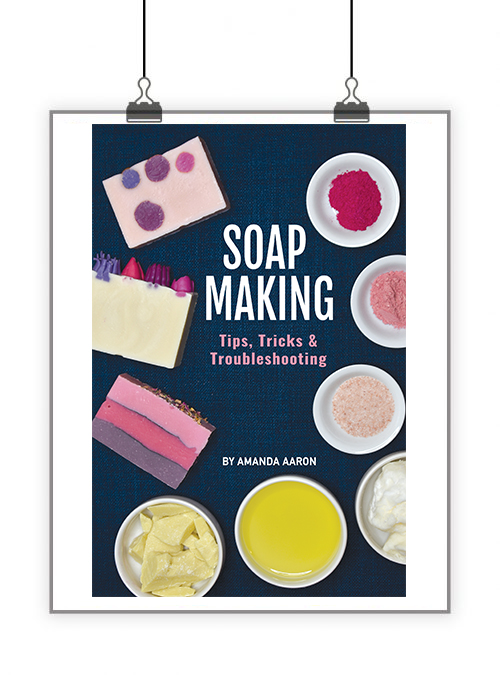This is an issue that I’ve seen many times in our Facebook Group, Saponification Nation. A soaper goes to unmold a soap and it is soft, a bit crumbly…almost like Playdough.
It doesn’t zap, so we know it isn’t lye heavy. And you’re positive that you added enough lye. Here is what it can look like.
As long as the soap doesn’t zap, which could indicate that you’ve used too much lye, the soap is perfectly fine to use. It will eventually harden up. But one thing I like to do is take advantage of the Playdough texture and roll it into balls for embeds!

If you don’t emulsify/mix your soap enough, you can have this issue. When we create swirled soap, we want to mix our soap to emulsion, not trace, so that we have plenty of time to divide, color and execute our swirl. If you are afraid of mixing too much, you might accidentally not mix enough!
There are two things to look for to make sure your soap is emulsified.
Oil streaks – If you see oil separated out, either floating on the surface or along the sides of your container, keep mixing.
Color – The soap should be all the same color and opacity.
Occasionally, I do under-mix my main mixture a bit. As I’m mixing in colors, I make sure that the soap is fully emulsified before pouring. One thing I’ve noticed is that if my soap has surface bubbles after using my mini-mixer, it is not mixed enough and will cause a soft soap if I swirl with it.
Check out the surface bubbles on the soap below after I’ve mixed in my color. I can tell that I need to emulsify this soap more before I use it. I let it sit for a few minutes and mix with my mini-mixer until I get the correct consistency.

Here is what it should look like! Fully emulsified and no surface bubbles. It is still plenty fluid so that I’ll be able to swirl.

I hope this short article helps you if you’re experiencing a soft and crumbly soap!
Happy Soaping!

Want more tips and tricks? Check out my eBook, Soapmaking Tips, Tricks & Troubleshooting!

In Soapmaking Tips, Tricks and Troubleshooting, I provide extensive troubleshooting advice for when soap goes wrong. Moving beyond the basics, this book discusses advanced topics such as superfatting, water discounts, fatty acid profiles, gel phase and more.
Focusing on tips and tricks that make soapmaking more efficient, Soapmaking Tips, Tricks and Troubleshooting addresses advanced ideas, terms and definitions, helping you go from soapmaking novice to master.
With input from over 100 soapmakers, you’ll learn advanced techniques that improve your craft and make soapmaking infinitely more fun.









This definitely solved a mystery issue with a loaf I made. Lathers up and behaves like soap, but, like you mention in your title, had a powdery crumbly texture. Wasn’t trying a swirl, I was trying to do alternating blue, white green stripes.
Thanks for the info! Help me understand my last year’s mishap with a false funnel pour.
Wow! I searched all over the web past year trying to figure out what I had done wrong…to no avail, I was never able to use the right description to get results that matched my issue. But this is exactly how two separate loaves came out, my first two attempts at swirling soap. I think I’ll be trying a swirl again very soon! Thank you for this insight!
Really helpful! Thank you.